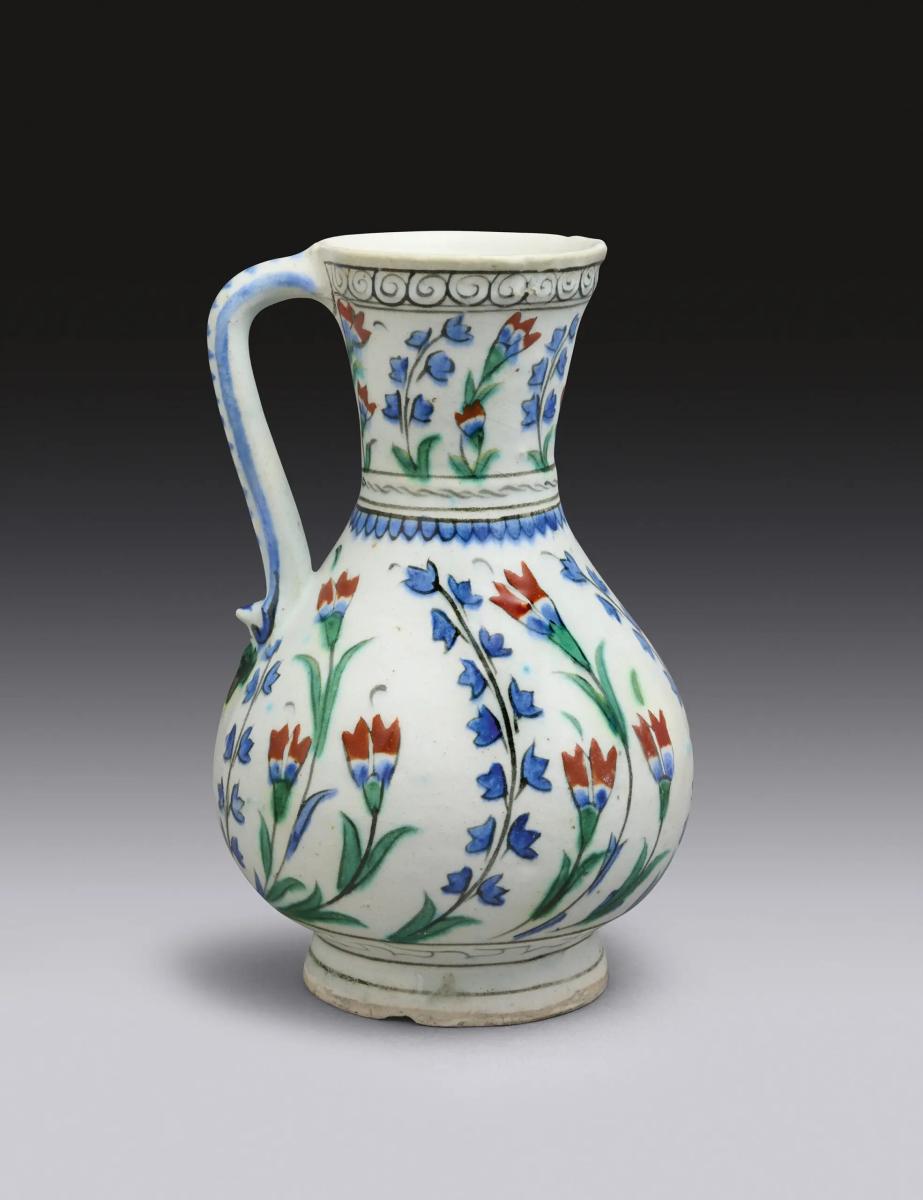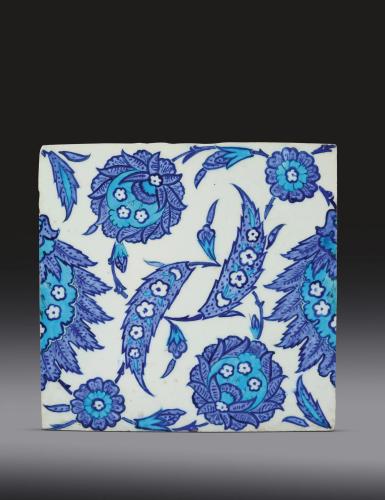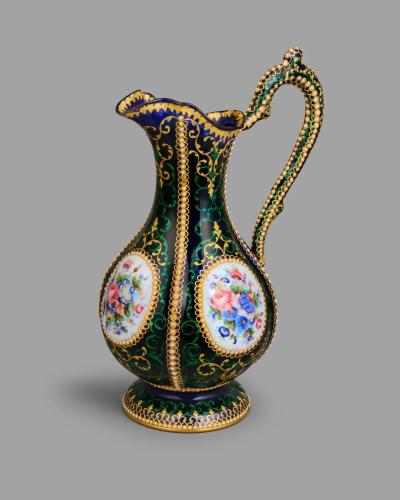

Price on application
This object is eligible for a Certificate of BADA Provenance
The BADA Standard
- Since 1918, BADA has been the leading association for the antiques and fine art trade
- Members are elected for their knowledge, integrity and quality of stock
- Our clients are protected by BADA’s code of conduct
- Our dealers’ membership is reviewed and renewed annually
- Bada.org is a non-profit site: clients deal directly with members and they pay no hidden fees
Iznik Polychrome Jug Decorated with Delphiniums and Carnations.
Ottoman Empire.
Second half of the 16th Century.
Height: 22.5 cm.
Fritware, with bulbous body, slightly flaring neck and s-shaped handle. Decorated in blue, green and coral red, on the body and the neck, with delphiniums and carnations. Narrow band of wave motifs around the rim.
This jug, with its delphiniums and carnation motifs, is an excellent example of the use of flowers in Ottoman decorative repertoire. Delphiniums, hyacinths and carnations, much favoured by the artists working in the 16th century Ottoman palace workshops (nakkaşhane), were used in the decoration of Iznik ceramics as well as imperial silks and velvets. Please see Ara Altun & Belgin Arlı’s Tiles – Treasures of Anatolian Soil – Ottoman Period, Kale Group Cultural Publications, Istanbul, 2008, fig. 140, p. 135 and Michael Rogers’ Topkapı: Costumes, Embroideries and other Textiles, Thames & Hudson, London, 1989, pl. 22.
Like the tulip and rose, the carnation is one of the flowers frequently mentioned in Ottoman court poetry where it is likened to the face or cheek of the beloved. From the second half of the 16th century carnations are one of the most widely used motifs in designs by palace artists for fabrics, embroideries, tiles and ceramic ware. In Iznik ceramic decoration the thickly applied coral red so characteristic of this ware is used also for carnations as can be seen on the present jug. For further information please see, Motif from the Sadberk Hanım Museum Collection (written by Turgut Saner, Şebnem Eryavuz and Hülya Bilgi), Sadberk Hanım Museum, Istanbul, 2020, pp. 98-99.
A comparable Iznik dish decorated with delphinium sprouts is in the David Collection, Copenhagen. Please see, Julian Raby & Nurhan Atasoy, Iznik: The Pottery of Ottoman Turkey, Alexandria Press, London, 1989, p. 235, pl 428.
Provenance
Ex-Émile Tabbagh Collection, Paris.
Émile Tabbagh (d. 1936 ?)
Émile Tabbagh was a renowned dealer-collector. A catalogued sale of his famous collection took place in 3-4 January 1936, at Anderson Galleries, in New York. The title of the sale catalogue is A Magnificent Collection of Near Eastern and Early Mediterranean Art: Ceramics, Miniatures, Oriental Rugs, Ancient Glass – Property of the Estate of the Late Émile Tabbagh, Paris and New York, American Art Association Anderson Galleries (30 East 57th Street New York), 3-4 January 1936.
The BADA Standard
- Since 1918, BADA has been the leading association for the antiques and fine art trade
- Members are elected for their knowledge, integrity and quality of stock
- Our clients are protected by BADA’s code of conduct
- Our dealers’ membership is reviewed and renewed annually
- Bada.org is a non-profit site: clients deal directly with members and they pay no hidden fees



